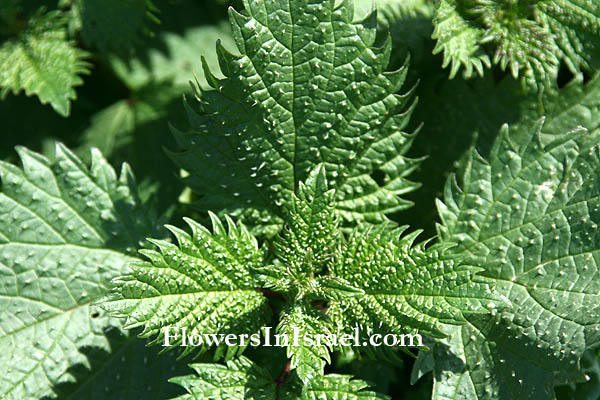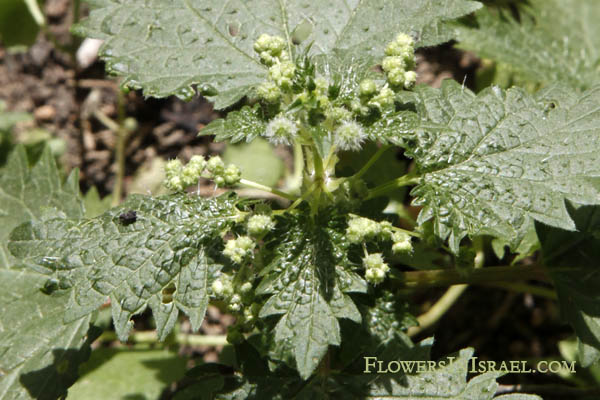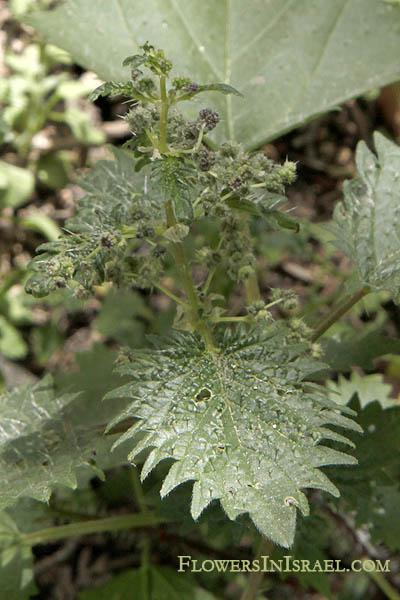Hebrew: סרפד צורב, Arabic:قريص , Egypt:حريق "Horreiq"
| Scientific name: | Urtica urens L. | |
| Common name: | Small nettle, Dwarf stinger, Dog nettle | |
| Hebrew name: | סרפד צורב | |
| Arabic name: | قريص | |
| Egypt: | حريق "Horreiq" | |
| Plant Family: | Urticaceae, סרפדיים |

|
| Life form: | Therophyte, annual | |
| Spinescence: | Emergences | |
| Stems: | Up to 60 cm high, branching from base | |
| Leaves: | Opposite, entire, dentate or serrate | |
| Inflorescence: | Racemes, usually not exceeding the petioles, fe-flowered axillary clusters, with numerous female and few male flowers, both present on the same inflorescence | |
| Flowers: | Green, petals absent | |
| Fruits / pods: | Achenes elliptic, flattish, 0.9-1.1 x 0.7-0.8mm; light-greyish or pale-brown | |
| Flowering Period: | January, February, March, April, May, June, July, December | |
| Habitat: | Nutrient-rich soils, ruderal | |
| Distribution: | Mediterranean Woodlands and Shrublands, Semi-steppe shrublands, Shrub-steppes, Deserts and extreme deserts | |
| Chorotype: | Med - Euro-Siberian | |
| Summer shedding: | Ephemeral |

Location, Jerusalem, Getsemane Derivation of the botanical name: Urtica, uro, I burn, alluding to the nettle's sting; stinging nettle. Their capability to sting makes them useful for metaphors. In the Bible three different Hebrew names are quoted: Sirpad (סרפד)- in Isaiah 55:13; Seravim (סרבים)- in Ezekiel 2:6; Harul (הרול)-Zephaniah 2:9. They are synonyms, the roots s-r-f and h-a-r both meaning 'scorching' or 'burning'. urens, Latin urere, to burn, and refers to the stonging hairs. The Hebrew name"סרפד, serpad, maybe from סרף = שרף, "Seraf" שרף (resin) and it also indicates the burning characteristic of the plant.
Hitty Pitty without the wall; If you touch Hitty Pitty, Hitty Pitty will bite you. Bible resources:

Location, Jerusalem, Getsemane |